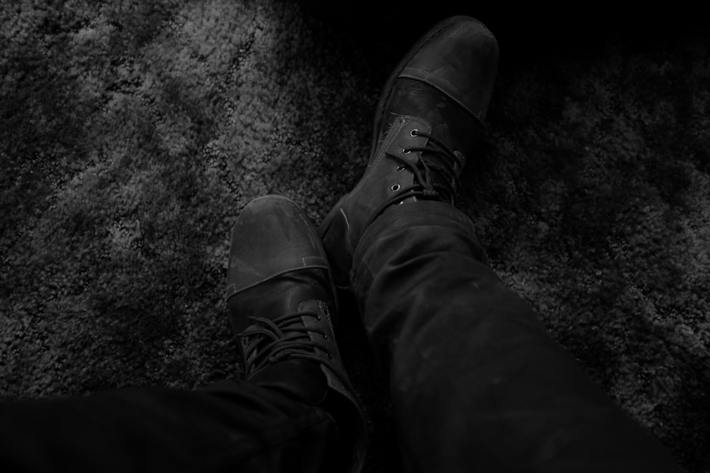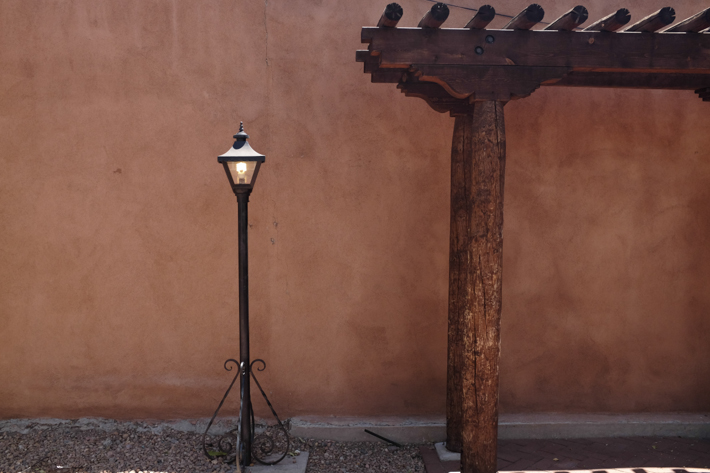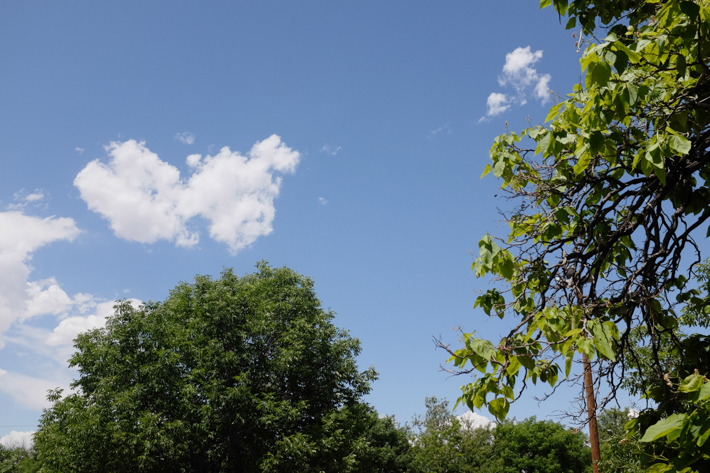The FujiFilm X100S appears to be the camera everyone is seeking this summer. The upgrade to the highly successful X100 has promised faster speeds and additional features and the early reports have been singing its praise. So much praise, in fact, that Zack Arias recently made the statement that it will single handedly kill the DSLR in its tracks. But will it?
Features
Many people have commented that this camera is simple by design, however I have to disagree. The menu itself is complicated, spans well over 5 pages, and in no way does it seem to have any organization to it. It jumps from Self-Timer to ISO, without any explanation as to why. Aside from that, switching to something such as video mode changes the menu in its entirety. It also is filled with arbitrations. Given the ISO 200 standard, features such as the Neutral Density filter seems to be no more useful than ISO expansion to ISO 100; so why have such a feature, Fuji?
Aside from the menu being unnecessarily complex, the camera itself seems to lack some obvious features. The aperture and shutter speed mechanically jump full stops, and allow for fine tuning by using buttons and dials on the back. This just further complicates things, as now you're manual dials say your shutter speed is one thing, when infact it can be 2/3rd of a stop different. While I love the design they're going for with the physical dials, it just doesn't feel practical when their readings are incorrect at times.
Perhaps the most frustrating thing about this camera is that I really like it. In no way is a fixed lens practical in my work, nor is having that fixed lens be a 23mm f/2. Also, in no way is this camera small enough to pocket, so it certainly isn't a camera that you can have on you at all times. My phone still owns that space. However that being said, the images from this camera are sharp and gorgeous. At times, it even rivaled my Canon 5D Mark II with a Canon 35mm f/1.4L. And when you start navigating the features, you find some interesting ones. Multiple exposures, AE Bracketing, film simulation, panoramics and HD Video functions are all included in this little guy.
The features are a huge improvement from its predecessor. The autofocus is fast and accurate, something that can't be said for the original X100. The camera starts up quickly and is ready to shoot within a fraction of a second of being turned on, another fatal flaw to the X100. The hybrid viewfinder is as sexy as ever, with an overabundance of information overlaid within the viewfinder (More on that below).
Above is (Straight Out of The Cameras) photos between the FujiFilm X100S, and a Canon 5d Mark II w/ Canon 35mm f/1.4L. While the exposures are slightly off (Because of the complicated full stops system the X100S), the color and bokeh coming from them both are surprisingly similar. The Canon 35mm f/1.4 has a slightly smoother bokeh, but it also comes at nearly twice the price in gear compared to the Fuji X100S.
The camera does still struggle with low light focusing. Sometimes focusing for a couple seconds and often giving up, it makes low light conditions a bit of a pain to shoot in. Often, in low light conditions, I found the lens backfocusing ever so slightly, so I was often just switching to to manual mode when indoors in these conditions.
Speaking of manual focusing, on this camera it works great. Using the ‘Digital Split Image’ feature makes you feel as if you’re holding a $5,000 rangefinder. Using the viewfinder, you're able to line up horizontal bands and fire. If done correctly, you should have everything you want in focus. Another new feature in the focusing department is the Focus Peaking. Using this technique, originally found in old film cameras, you’re able to focus manually with supreme accuracy. These features, for me, made up for and in the end balanced out my issues with the slow low-light focusing performance.
Another excellent feature is the use of a leaf shutter. Paired with hot shoe, this allows the X100S to sync flashes at speeds over 1/1000th of a second, something not possible for DSLRs (without the use of hypersyncing). This is extremely exciting news for strobist, allowing them to shoot with wide open apertures, and without the use of ND filters.
The 23mm f/2 lens (Which is about a 35mm on a full frame sensor) feels and works great, however is the exact same lens you'd find on its predecessor, the FujiFilm X100. While a little soft wide open, it still performs great and really finds it sharpness around f/2.8-f/4.
Aside from just photography functions, the FujiFilm X100S is equipped with HD video functions. In my personal experience, the footage was great and the settings were easy to use. However, no additional features have been added to differentiate it from the X100 in terms of video.
Appearance And Feel
Perhaps this is my favorite part of this camera: it's just really pretty. With its brushed metal and dimpled faux leather, it's a modern take on a rangefinder you'd expect to see in the 70s. Improvements to its form factor from the X100 certainly don't go unnoticed either. The Q button has been added, and makes navigating through the menu slightly less of a chore.
The hybrid viewfinder is quite simply, sexy. With an overlay of information, the viewfinder feels almost futuristic in nature. The ability to put even the menu into the viewfinder, it makes to so this camera is never leaving your eye when shooting. However, with the downfall of a hybrid viewfinders, also comes the cropping issue. Since the viewfinder itself is not through the lens, it makes it so cropping of images is off axis. You really need to pay attention to guidelines, as the viewfinder extends beyond the vision of the lens itself. If you’re cropping tight through the viewfinder, you may actually crop too tight in the final image.
In comparison to the X100, the buttons and dials feel stiffer which gives the camera a more rugged feel. In no way am I worried that this little camera is going to break on me or fall apart and for $1300, it shouldn’t.
But perhaps what I like most about this camera is how it makes me feel when I'm using it. It makes me look at photography as an art again, and not as a commercial endeavor. It made me feel and drew me back into what made me love photography in the first place: the feeling of simply walking around with a camera and experimenting. It's not about getting the sharpest images for your clients, or adjusting lights inches by inches to get a perfect wrap around light on someone's face, it was just about clicking a shutter at things you like. This camera, in all of its limiting features, gave me a new sense of love for the art.
Example Photos
All photos below are unedited and straight out of the camera from the course of the last 2 weeks walking around with it.







What I Liked
Great Image Quality
Leaf Shutter
Plenty of Features
Manual Focusing Options
Beautifully Designed
What could use improvement
Complicated Menus
Bad Low-Light Focusing
1/3rds Stops system for Aperture and Shutter Complicated
There is no doubt in my mind that the FujiFilm X100S is a huge improvement to the X100, and is a wonderful camera. The images are sharp, the colors are vibrant, and the performance is stellar. Is it a DSLR replacement like Zack Arias claims? Absolutely not. Without the ability to remove the 23mm fixed lens, you're still left wanting more diversity. While this may replace the DSLR as a walkaround camera, many camera companies have already created that (Canon S100, Nikon P300 or even a Sony NEX5/Nex7 for example). It you're looking to get a new camera that makes you reinvestigate photography and have $1300 rotting away in your bank account, the FujiFilm X100S is a wonderful choice. If you're looking to find 90% of a Leica at 20% of the cost, the FujiFilm X100S is a your camera. But if you're looking for something to replace the DSLR around your neck, you will need to look elsewhere.
If you want to pick up the FujiFilm X100S for yourself, you can find it here.








Thanks for the review it was very helpful!z
Zach, after reading the comments I honestly can't take this article seriously.
Zach, given your talent, you should know that DSLR is not the answer to everything. The X100S is one of the best (except for Leica) given for the price. You should know this by now quality over quantity,
I obviously am somewhat of a beginner only doing my first commission in 1954 (aged 11). I have done a bit since then, current camera count used/owned is around 200, most formats from 110 up. Yars in darkrooms, covert surveillance, book publishing, slides, prints, cibachrome, digital et al. Too many 'techies' out there you know all there is to know about 1/3 f stops, menus, interchangeable lenses etc. etc. infinitum. But would I stop and spend time looking at your pictures like I would Lichfield, Newton, Sutcliffe, probably not! It's about the picture not what takes it. Get a life, better still get out and take great pics with whatever you've got be it a phone or a Hassleblad!
Now as for the x100s - picked it up, switched it on, same as my old Leics, and my Oly OM's (funny can't remember any talk of 1/3 stops with any of them) - just twirled the dials to suit and took some pics - munu's - OK spent 10 mins with them one night when I had little else to do - but do you need em - no! As for those who love Leica's - so do I but their digital stuff is 3rd rate and not worth anything like they are charging. My current brace of Nikons and prime lenses (zooms are for the lazy and snap-shooters) cost less than a Leica and their picture quality is as good if not better. The x100s won't replace the Nikons for most work - but it will replace them on holidays, trips abroad, and totally for 'street' work. It's like the return of old friends to some extent and that ain't at all bad - oh and the pics are great - to me at any rate.